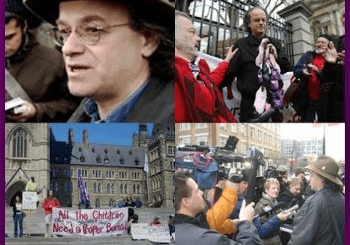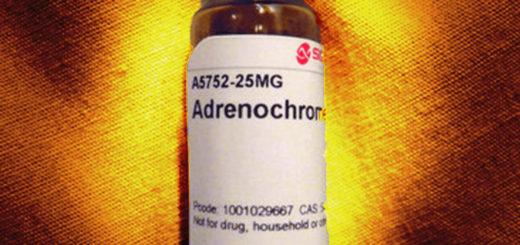How FDR Forced Japan to Attack Pearl Harbor (Military Base) All the While Lying That He Was Avoiding War
Comment: U.S. Gov’t Psychopaths always attack UnArmed Women and Children in Refugee Cities.. Japan attacked a Navy Ship on a Military Base. U.S. bombed women & children in Hiroshima and Nagasaki as they always do.
LewRockwell.comanti-state•anti-war•pro-market
How FDR Forced Japan to Attack Pearl Harbor While Lying About Trying to Avoid War
By J. Alfred Powell
The Unz Review
July 25, 2019donateFacebookTwitterhttps://platform.twitter.com/widgets/tweet_button.96fd96193cc66c3e11d4c5e4c7c7ec97.en.html#dnt=false&id=twitter-widget-0&lang=en&original_referer=https%3A%2F%2Fwww.lewrockwell.com%2F2019%2F07%2Fno_author%2Fhow-fdr-forced-japan-to-attack-pearl-harbor-while-lying-about-trying-to-avoid-war%2F&related=AddToAny%2Cmicropat&size=m&text=How%20FDR%20Forced%20Japan%20To%20Attack%20Pearl%20Harbor&time=1607351016555&type=share&url=https%3A%2F%2Fwww.lewrockwell.com%2F2019%2F07%2Fno_author%2Fhow-fdr-forced-japan-to-attack-pearl-harbor-while-lying-about-trying-to-avoid-war%2Fhttps://www.facebook.com/v3.1/plugins/like.php?app_id=0&channel=https%3A%2F%2Fstaticxx.facebook.com%2Fx%2Fconnect%2Fxd_arbiter%2F%3Fversion%3D46%23cb%3Dfe8c1c22f160a8%26domain%3Dwww.lewrockwell.com%26origin%3Dhttps%253A%252F%252Fwww.lewrockwell.com%252Ff2e6996c83e996c%26relation%3Dparent.parent&container_width=0&href=https%3A%2F%2Fwww.lewrockwell.com%2F2019%2F07%2Fno_author%2Fhow-fdr-forced-japan-to-attack-pearl-harbor-while-lying-about-trying-to-avoid-war%2F&layout=button&locale=en_US&ref=addtoany&sdk=joey&width=90

Robert B. Stinnett, (New York, Free Press, 2000)
A Second World War Navy radioman turned journalist, Robert Stinnett was in the National Archives in Belmont, California, researching a campaign-year picture book on George Bush’s South Pacific wartime navy career in aerial reconnaissance — George Bush: His World War II Years (Washington, D.C., Brassey’s, 1992) — and encountered unindexed duplicate copies of Pearl Harbor radio intercept records of Japanese Navy code transmissions — documentary evidence of what actually happened at Pearl Harbor and how it came about.
After eight years of further research and a prolonged case at law under the Freedom of Information Act to obtain partial release of these materials, Stinnett published Day of Deceit (2000). A Japanese translation appeared within a year, understandably.
Stinnett demonstrates, on the basis of extensive incontrovertible factual evidence and self-evidently accurate analysis that President Roosevelt oversaw the contrivance and deployment of a closely-guarded secret plan to goad the Japanese into attacking Pearl Harbor and monitor them while they did it. Stinnett hypothesizes that Roosevelt did this in order to precipitate an unwilling American public into supporting intervention in the Second World War, but whatever the motives or purposes, the facts are now abundantly clear. Stinnett establishes and proves his case with voluminous documentary evidence, including forty-seven pages of Appendices [p. 261-308] presenting photographic reproductions of key official records, as well as numerous others reproduced in the body of the text, and 65 pages [309-374] of closely detailed reference notes.
This evidence proves Stinnett’s factual assertions, arguments and conclusions. His research files and notes are deposited at the Hoover Institute library at Stanford. Day of Deceit is exemplary documentary historiography. It presents the material testimony on which its analysis and conclusions are based. Its validity will be clear to any fair-minded reader. Stinnett’s book settles and resolves rational, candid, honest, fact-based discussion and debate about the background of the attack on Pearl Harbor.
As Stinnett shows, the plan that eventuated in the Japanese attack on Pearl Harbor was set in motion in early October 1940 based on an “eight-action memo, dated October 7, 1940 … by Lieutenant Commander Arthur H. McCollum, head of the Far East desk of the Office of Navy Intelligence.” Of course, it is unlikely that McCollum drafted it on his own initiative, but this is where Stinnett’s paper trail starts. “Its eight actions call for virtually inciting a Japanese attack on American ground, air, and naval forces in Hawaii, as well as on British and Dutch colonial outposts in the Pacific region….” [p. 6-8; the memorandum is reproduced on 261-267]:
A. Make an arrangement with Britain for use of British bases in the Pacific, particularly Singapore.
B. Make an arrangement with Holland for the use of base facilities and acquisition of supplies in the Dutch East Indies [now Indonesia].
C. Give all possible aid to the Chinese government of Chiang Kai-shek.
D. Send a division of long-range heavy cruisers to the Orient, Philippines, or Singapore.
E. Send two divisions of submarines to the Orient.
F. Keep the main strength of the US Fleet, now in the Pacific, in the vicinity of the Hawaiian islands.
G. Insist that the Dutch refuse to grant Japanese demands for undue economic concessions, particularly oil.
H. Complete embargo all trade with Japan, in collaboration with a similar embargo imposed by the British Empire.
As the plan unfolded its development was closely monitored through decoded intercepts of Japanese diplomatic and naval radio communications. “McCollum oversaw the routing of communications intelligence to FDR from early 1940 to December 7, 1941 and provided the President with intelligence reports on Japanese military and diplomatic strategy. Every intercepted and decoded Japanese military and diplomatic report destined for the White House went through the Far East Asia section of ONI, which he oversaw.
The section served as a clearinghouse for all categories of intelligence reports…. Each report prepared by McCollum for the President was based on radio intercepts gathered and decoded by a worldwide network of American military cryptographers and radio intercept operators…. Few people in America’s government or military knew as much about Japan’s activities and intentions as McCollum.”[8] Knowledge of the plan was closely held, limited to 13 Roosevelt administration members and chief military officers and 21 members of Naval Intelligence and related operations [listed in Appendix E 307-308]. Item C was already US policy when McCollum wrote his memo. Item F was set in motion on October 8, Items A, B and G on October 16, 1940, Item D and E by November 12, 1940. [Chap. 1 n. 8 p. 311-312; 120 ff. etc.].
Meanwhile, also in the fall of 1940, campaigning for a third term in Boston on October 30, President Roosevelt said: “I have said this before, but I shall say it again and again and again: Your boys are not going to be sent into any foreign wars.” On November 1 in Brooklyn he said “I am fighting to keep our people out of foreign wars. And I will keep on fighting.” At Rochester on the 2nd he said “Your national government … is equally a government of peace — a government that intends to retain peace for the American people.”
The same day in Buffalo he asserted “Your President says this country is not going to war,” and in Cleveland on the next he declared “The first purpose of our foreign policy is to keep our country out of war.” [William Henry Chamberlin, “How Franklin Roosevelt Lied America Into War,” in Harry Elmer Barnes, Perpetual War for Perpetual Peace (Caldwell, Idaho, Caxton, 1953), Chapter Eight, p. 485-491].
Admiral Richardson, commander of the Pacific Fleet, opposed Roosevelt’s orders [Item F] to station the fleet at Pearl Harbor as putting the fleet at risk, so he was replaced with Admiral Kimmel, with Admiral Anderson of ONI as Kimmel’s third in command at Pearl Harbor, to supervise the radio intercept operation there, unbeknownst to Kimmel. [10-14; 33-34] “Anderson was sent to Hawaii as an intelligence gatekeeper”[36]. When he arrived he established his personal housing well away from Pearl Harbor, out of range of the coming attack.
Though he was commander of the seven battleships which bore the brunt of the attack with the loss of over two thousand lives, Admiral Anderson was safe at home on the other side of the mountain when the attack came. [36-37; 244, 247] Meanwhile, the commanders in Hawaii, “Admiral Husband Kimmel and Lieutenant General Walter Short, were deprived of intelligence that might have made them more alert to the risks entailed in Roosevelt’s policy, but they obeyed his direct order of November 27 and 28, 1941: ‘The United States desires that Japan commit the first overt act.’” [6-8] Afterward, they were scape-goated.
In early January 1941 the Japanese decided that in the event of hostilities with the US they would commence with a surprise attack on Pearl Harbor. American intelligence learned of this plan on January 27 [30-32]. On July 21, 1941 Lieutenant Commander McCollum’s Item H lit the fuse. Up through late November the White House continued to block concerted attempts by Japanese diplomats to discuss an accommodation. [On this diplomatic history see Charles Beard , American Foreign Policy in the Making (1946) and President Roosevelt and the Coming of the War (1948); Frederic Rockwell Sanborn, Design For War (1951); and Charles Tansill, Back Door To War (1952).]
Beginning November 16, 1941, radio intercepts revealed the formation of the Japanese fleet near the Kurile Islands north of Japan and from November 26 through the first week of December tracked it across the Pacific to Hawaii [41-59 etc.]. Chief of Naval Operations Admiral Stark (one of the 34 informed participants) ordered Kimmel to dispatch his aircraft carriers with a large escort fleet to deliver planes to Wake and Midway Islands. “On orders from Washington, Kimmel left his oldest vessels inside Pearl Harbor and sent twenty-one modern warships, including his two aircraft carriers, west toward Wake and Midway… With their departure the warships remaining in Pearl Harbor were mostly 27-year-old relics of World War I.”
That is, the battleships sunk at Pearl Harbor with their crews were employed as decoys [152-154]. On 22 November 1941, a week after the Japanese fleet began to assemble and four days before it sailed for Oahu, Admiral Ingersoll issued a “Vacant Sea” order that cleared its path of all shipping and on 25 November he ordered Kimmel to withdraw his ships patrolling the area from which the aerial attack would be staged [144-145]. FDR kept close tabs on the plot’s final unfolding while radio intercepts continued to track its voyage toward Hawaii [161-176].
Stinnett comments: “Pearl Harbor’s Battleship Row and its old dilapidated warships presented a mouth-watering target. But it was a major strategic mistake for the Empire. Japan’s 360 warplanes should have concentrated on Pearl Harbor’s massive oil stores … and destroyed the industrial capacity of the Navy’s dry docks, machine shops, and repair facilities”[249]. Six months later, at the battles of Coral Sea (May 4-8, 1942) and Midway (June 4-7), the warships of the Pacific Fleet which were at sea when the attack on Pearl Harbor occurred permanently destroyed the offensive capacity of the Japanese Navy to operate in the eastern Pacific and permanently crippled its defensive capacity in the western Pacific. Thereafter, as informed observers understood, a Japanese attack or invasion of the West Coast of America was a total logistical impossibility. Nevertheless, two months later, the internment of West Coast Japanese American citizens began in August 1942.
The Pearl Harbor coverup began immediately afterward with the court marshals of Admiral Kimmel and General Short, continued through eight Congressional investigations during and after the war, with the purging and withholding of documents and false testimony by participants and others [253-260 & passim; 309-310] and persisted through the Congressional hearings chaired by Strom Thurmond in 1995 [257-258].
At the date of publication (2000) numerous documents were still withheld from Stinnett or released in extensively censored form. But his case is conclusively proven on the basis of the evidence he presents, as any fair-minded reader can see. The only way to refute or debunk it would be to establish that his documentary evidence is forged, and prove it. In face of the character of this evidence, the idea is nonsensical.
A key break for Stinnett’s research was his discovery of duplicate copies of reports of Japanese naval code transmissions from the Pearl Harbor radio-intercept station routed after the war to the Belmont (California) National Archives, and still there long after the copies in the Washington, D.C. archive files had been disappeared.
Recent writers pretending to debunk Stinnett’s evidence have resurrected claims that the Japanese naval codes had not been deciphered and that the Japanese fleet maintained radio silence — claims that have been refuted repeatedly for decades. Famously, the radio operator of the American liner Mariposa intercepted repeated signals from the Japanese fleet steaming toward Hawaii and relayed its progressive bearings to the Navy. This was well-known during the war to American seamen of the Pacific merchant marine and is mentioned in published accounts.
The pretense that the Japanese naval and diplomatic codes had not been deciphered was first refuted in a federal court in Chicago in 1943. As her biographer Ralph G. Martin recounts, Cissy Patterson, managing editor of the Washington Times-Herald on December 7, 1941 (and for decades before and after) was opposed to American intervention in another world war — like over 80% of her fellow Americans, including her brother Joe Patterson, publisher of the New York News, and her cousin Robert McCormick, publisher of the Chicago Tribune. Serving in France as a battlefield officer, Robert was wounded, twice gassed, and decorated for valor. His Chicago Tribune, like his cousins’ newspapers and numerous others, especially off the east coast, was vocally anti-interventionist — until Pearl Harbor.
In Cissy (New York, Simon & Schuster, 1979) Martin writes: “As the news of the disaster [at Pearl Harbor] kept coming in [to the Times-Herald’s newsroom], Cissy bitterly asked [her Sunday Editor] Roberts about Roosevelt, ‘Do you suppose hearranged this?’ Later when she learned that American cryptographers had broken the Japanese codes before Pearl Harbor, she was convinced that Roosevelt had known in advance that the Japanese intended to attack”[418]. “The Chicago Tribune, the Times-Herald, and two dozen other papers later printed an article by a Tribune war correspondent which indicated that the United States had prevailed [at Midway] because the Japanese codes had been broken…. The Department of Justice decided to file charges that the Tribune and the Times-Herald had betrayed U.S. military secrets…. Attorney General Francis Biddle felt the disclosure of this breakthrough had been tantamount to treason because it gave the Japanese the chance to change their codes. Waldrop [Times-Herald editor] was called to Chicago to testify before a grand jury… In the middle of the testimony, the Navy disclosed that a Navy censor had passed the Tribune article. Forced to drop the case, Biddle said he ‘felt like a fool.’” [431-432] He wasn’t the only one.
Reprinted with permission from The Unz Review.
Comment: Japan’s military Psychopaths had taken over Japan as well. See following article. The Military Psychopaths made Japan a War Machine.

October 16, 2019 Topic: HistoryRegion: AsiaBlog Brand: The BuzzTags: Imperial JapanWorld War IIAmericaPearl HarborOil Embargo
The 1 Reason Imperial Japan Attacked Pearl Harbor: Oil.
Or an oil embargo, that is.by Sebastien Roblin
Key point: Tokyo needed new oil supplies to wage its war in China and the only way to get them would be to attack Washington’s allies in the Pacific.SPONSORED CONTENT

The day after roughly 350 Japanese warplanes came screaming down over Pearl Harbor and sank or crippled eight of the U.S. Pacific Fleet’s battleships over a span of ninety minutes, Japanese newspapers published a statement by Emperor Hirohito declaring war with the United States and the United Kingdom and outlining its rationale for the attack.
“It has been truly unavoidable and far from Our wishes that Our Empire has been brought to cross swords with America and Britain… They have obstructed by every means Our peaceful commerce and finally resorted to a direct severance of economic relations, menacing gravely the existence of Our Empire. Patiently have We waited and long have We endured, in the hope that Our government might retrieve the situation in peace. But Our adversaries, showing not the least spirit of conciliation, have unduly delayed a settlement; and in the meantime they have intensified the economic and political pressure to compel thereby Our Empire to submission.”
Why exactly did Japan elect to attack a country with twice the population, five times the steel production and seventeen times the gross national income? The answer all came down to a U.S. embargo on imposed in response to Japan’s brutal invasion of China.
The fateful collision course between the United States and Japan was set ninety years earlier when in 1853 Commodore Matthew Perry arrived in a feudal, isolationist Japan and demanded it open itself to foreign trade. In the ensuing Meiji Restoration, the Japanese Emperor seized power from the feudal shogunate and implemented a policy of rapid modernization to avoid being exploited by Western imperialists as happened to China and India.SPONSORED CONTENT

In practice, this meant Japan not only industrialized and modernized its armed forces, but also sought its share of colonial spoils. In 1894-95, the Japanese fleet defeated a beleaguered China, then effectively seized and colonized the “Hermit Kingdom” of Korea. Then in 1904-1905, the Imperial Japanese Navy defeated Tsarist Russia in the first major victory by an Asian country against a European power in modern times. Finally, early in World War I Japanese forces captured Germany’s colonial possession in China on behalf of the Franco-British Entente alliance. Tokyo was rewarded with permanent control of those territories post-war—much to the anger of the Chinese, who had also supported the Entente’s war effort.
The Japanese military had its sights set on grabbing more Chinese territory. Using the pretext of an attack on a Japanese railroad in Mukden (modern-day Shenyang) actually staged by a nationalistic Japanese officer, Japanese troops seized Manchuria, assaulted the Great Wall of China in 1933, and created the puppet state of Manchukuo. Then the absurd Marco Polo Bridge incident in 1937 was used to justify a wider Japanese invasion in 1937 that seized most of China’s wealthy coastal cities.SPONSORED CONTENT

Japan’s civilian government was not universally supportive of the military’s aggressive campaigns. However, several anti-war politicians were brazenly assassinated by Japanese officers, and the civilian government came to be completely marginalized by the military.
Tokyo eventually dubbed its rapidly growing empire the Asian Co-Prosperity Sphere. The Sphere was intended to rally nationalists across Asia opposing the depredations of Western imperialism. However, while the Sphere did attract some supporters such as Thai Prime Minister Plaek Phibunsongkhram, in practice the Co-Prosperity Sphere simply meant exchanging one form of foreign exploitation for another.
But the Japanese invasion of China caused relations with Washington to deteriorate. The United States was not entirely innocent of Asian colonialism—it too profited from the increased trade enabled by the Opium Wars, deployed soldiers to suppress the Boxer Rebellion, and effectively occupied the Philippines between 1898 and 1935. However, Washington had cultivated ties with the Chinese Nationalists and was alarmed by Japan’s military buildup. Moreover, America was ill-inclined towards Tokyo due to increasing reports of Japanese atrocities which included massacres such as the rape of Nanjing and the operational testing of biological weapons on Chinese civilians.
Finally, after Japanese forces invaded French Indochina (modern Vietnam and Cambodia) in June 1941, President Roosevelt implemented a ban on iron, steel and oil exports to Japan jointly with Australia and the United Kingdom.SPONSORED CONTENT

Japan’s Pacific-spanning Empire depended on oil—and Japan had been importing 80 percent of it from the United States. Tokyo did have fifty-three million gallons of oil in reserve—a supply which could sustain its Empire for roughly a year.
Japan would have to withdraw from its Empire unless it could get more oil. There was a convenient supply of oil nearby at hand in the Dutch colonies of the East Indies. As the United Kingdom was tied down fighting Nazi Germany and the Netherlands was already occupied, Japan forces could likely use their existing oil reserve to capture the vital oil wells—but with the likely consequence of drawing the United States into war.
Thus, Tokyo began looking into a military option to cripple the U.S. military long enough to secure the Dutch oil wells and present a defeated U.S. public with a fait accompli.
Admiral Yamamoto warned Japanese militarists that he could only guarantee six months of victories—but he dutifully went ahead and planned the Pearl Harbor attack, which by any conventional military standard was an extraordinary success. Japan’s simultaneous invasions of the Dutch East Indies, Singapore, Burma, Hong Kong, Malaya and the Philippines likewise initially succeeded spectacularly.
But if the Pacific War were a board game, Japan had set up its pieces to pull off a series of killer movies early in the first few turns—but was still playing with a lot fewer pieces. Moreover, the Pearl Harbor raid failed to remove the most important U.S. pieces—its force of aircraft carriers, each carrying a hundred fighters and bombers that could attack targets hundreds of miles away.
After six months of Japanese victories, U.S. carriers sank four Japanese carriers in the Battle of Midway in June 1942—and subsequently embarked on an “island hopping” campaign that relentlessly dismantled the Japanese Empire over the next three years.
Undeniably, the U.S. oil embargo had backed Imperial Japan into a corner. The Japanese military’s instincts, supported by a succession of victorious conflicts against numerically superior foes, was to strike out. Tokyo trusted in the valor and prowess of its soldiers and the incompetence of its enemies rather than deciding to back down before a superior correlation of forces.
It follows that diplomatic compromises between Washington and Tokyo could have averted the Pacific War—but only with the consequence of enabling Japan’s brutal occupation of China, which is estimated to have caused the death of three to five million Chinese citizens.
Sébastien Roblin holds a master’s degree in conflict resolution from Georgetown University and served as a university instructor for the Peace Corps in China. He has also worked in education, editing, and refugee resettlement in France and the United States. He currently writes on security and military history for War Is Boring. This first appeared in December 2018.













